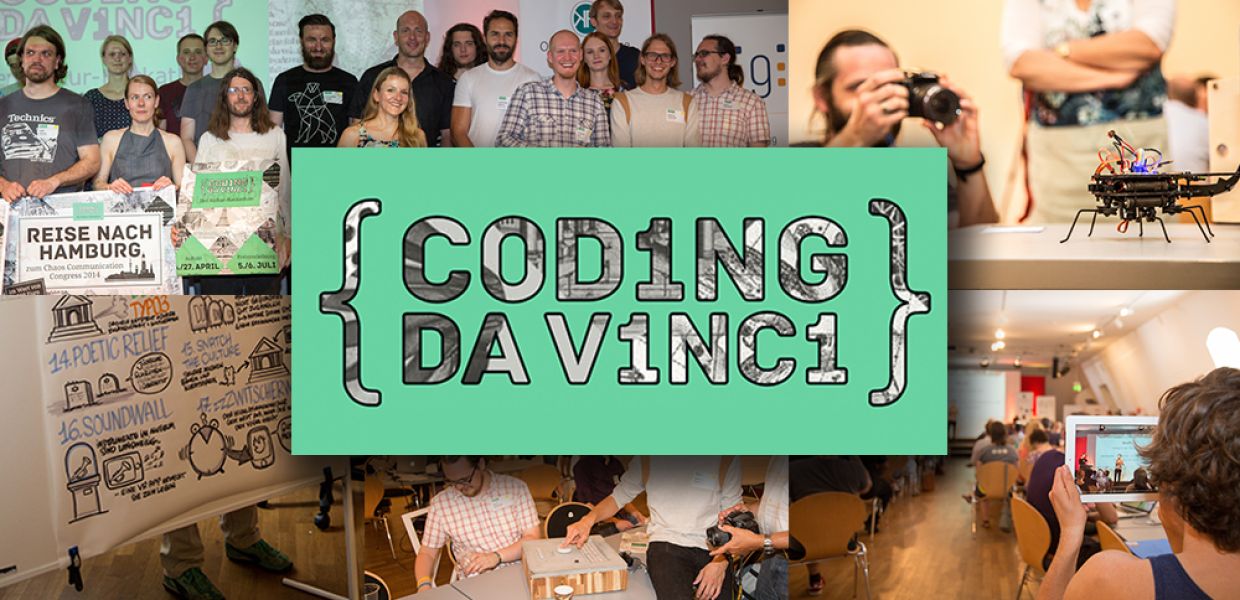Coding da Vinci Berlin 2017: gathering German hackers, designers, and cultural heritage providers
Learn more about the main hackathon for cultural heritage in Germany.
The main German hackathon for cultural heritage returns to Berlin
Coding da Vinci can well be regarded as the main hackathon event for digital cultural heritage in Germany. Initiated 2014 by Wikimedia Germany, Servicestelle Digitalisierung des Landes Berlin (digiS) and the German Digital Library (DDB), Coding da Vinci already ran highly successful events in 2014 and 2015. And the Coding da Vinci family keeps on growing new regional branches, with the Coding da Vinci Nord in Hamburg in 2016 , and further spin-offs coming up in Leipzig in April 2018 (Coding da Vinci East) and Mainz (Coding da Vinci West) later in 2018.
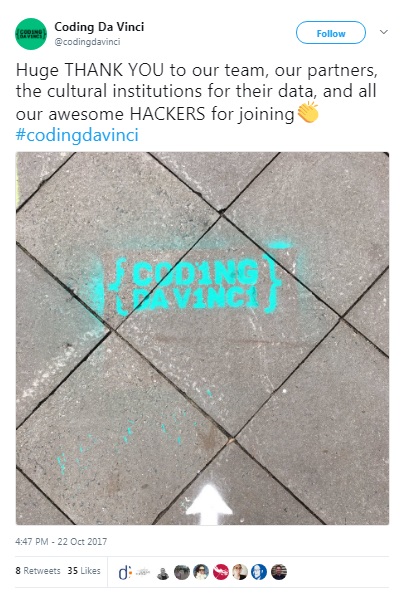
What makes Coding da Vinci different from most other cultural heritage hackathons? First, the scale - for the Berlin 2017 iteration, 19 cultural heritage organisations presented 31 datasets; and about 120 hackers, designers, makers or people interested in cultural heritage participated in the kick-off event on 21-22 October. Second, the time frame: the kick-off weekend is followed by a 6-week long sprint, which allows the teams to develop their idea pitches into exciting prototypes and demos.
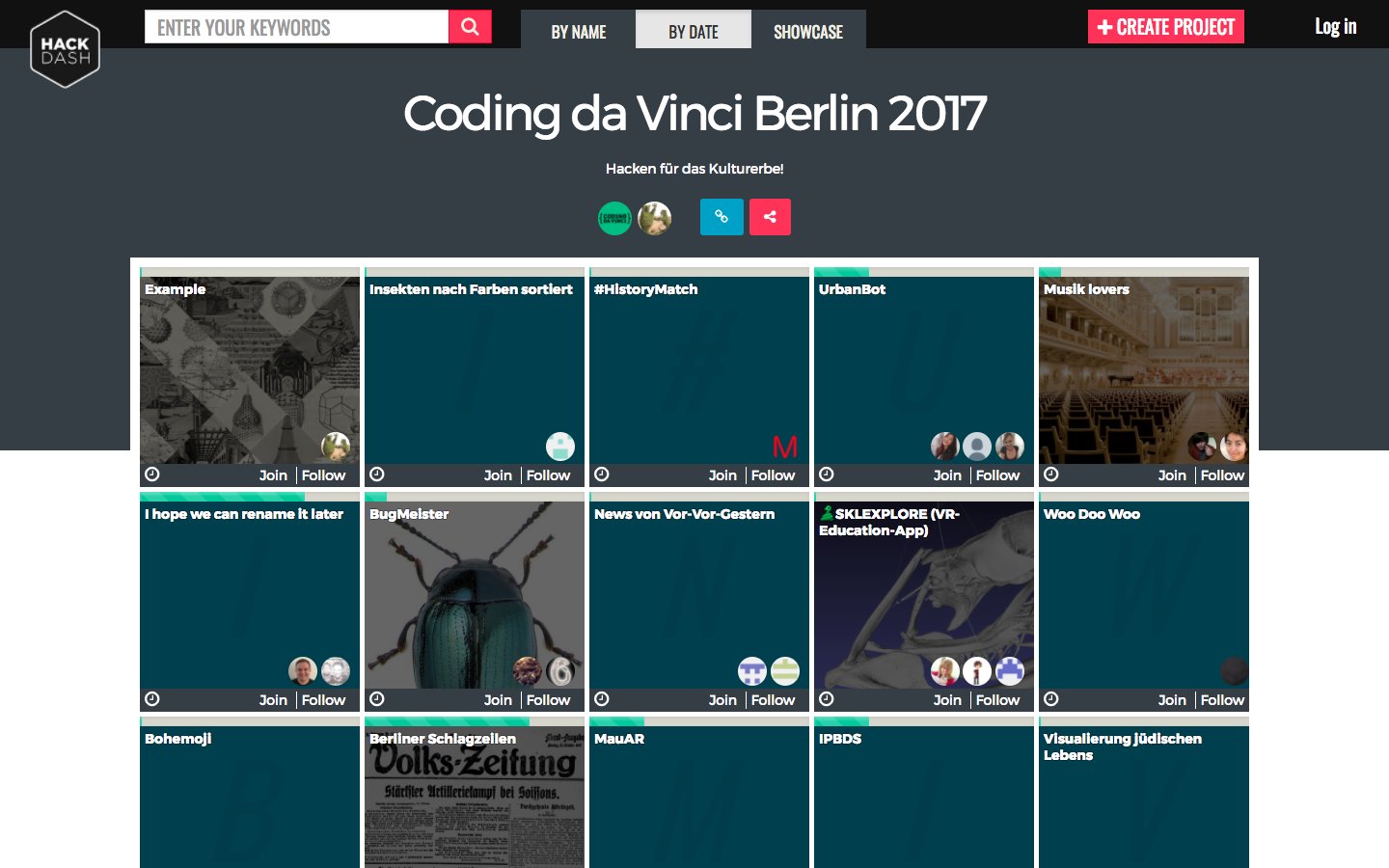
After an energetic weekend, projects started to pop up in the event’s hacking dashboard - a total of 25 ideas were put forward by various teams.
Newspapers
Being in charge of Europeana Newspapers, two projects particularly raised my interest:
Berliner Schlagzeilen is a Twitter bot that tweets daily front pages and headlines of newspapers from exactly 100 years ago, currently the ‘Berliner Volkszeitung’ that was digitised by the Berlin State Library and added to Europeana as part of the Europeana Newspapers project. You can view a demo and access the source.
Altpapier (German for ‘waste paper’) is an app that pushes articles from historical digitised newspapers to the user’s device. Because of OCR data quality issues and the lack of a fully-featured API, the team had to build their own CMS, API and even an article correction and transcription interface in order to obtain quality data for the app.
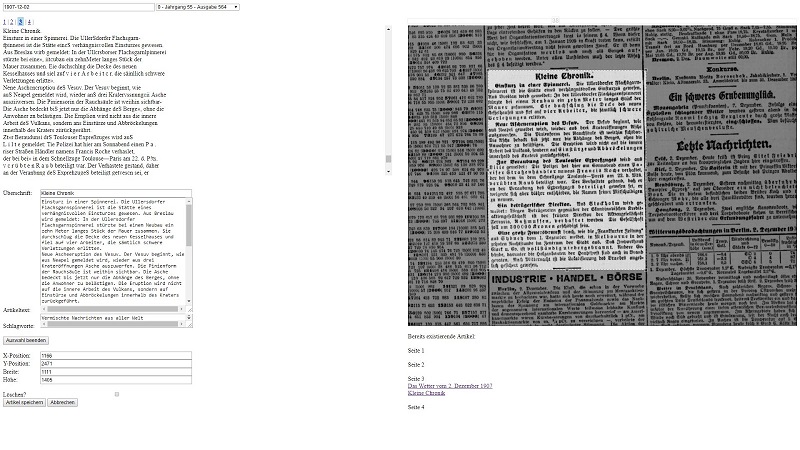
Users can select a newspaper issue via a calendar, browse the pages and mark any article on a page in order to be presented with the OCRed fulltext. One can then correct/transcribe the article and enrich it further with keywords. The cleaned articles are then pushed to the app. A version for Android is already available, a version for iOS will be released soon. You can download it from the Google Play Store and access the source.
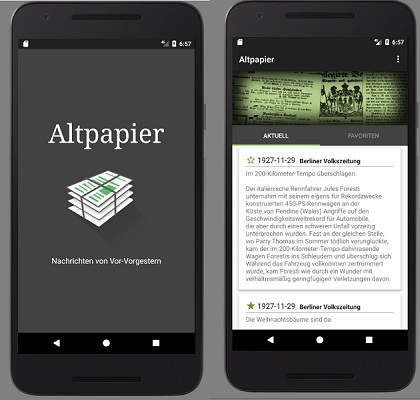
How good is your API?
Unfortunately, work is currently underway to refactor and relaunch both ZEFYS, the newspaper portal of the Berlin State Library, as well as the Europeana Newspapers portal, which is soon to be re-launched as a Europeana thematic collection. As a result, both platforms currently don’t provide the API features required by these projects, such as
-
Ability to retrieve OCR full-text
-
Ability to retrieve image snippets
-
Retrieve metadata in JSON format
-
Ability to retrieve individual articles
-
Ability to retrieve headlines
While (4) and (5) are issues inherent in the data itself and cannot easily be resolved without touching or reprocessing the source, items (1), (2) and (3) will soon be supported by both, Europeana and the Berlin State Library. What’s even nicer, since both platforms will be compatible with IIIF, many more use cases and applications can be supported in the future via those APIs.
2017 Awards
After an exciting but exhausting 6-week sprint following the kick-off on 21-22 October, the project teams and data providers rejoined for the award ceremony on 2 December at the Jewish Museum Berlin.
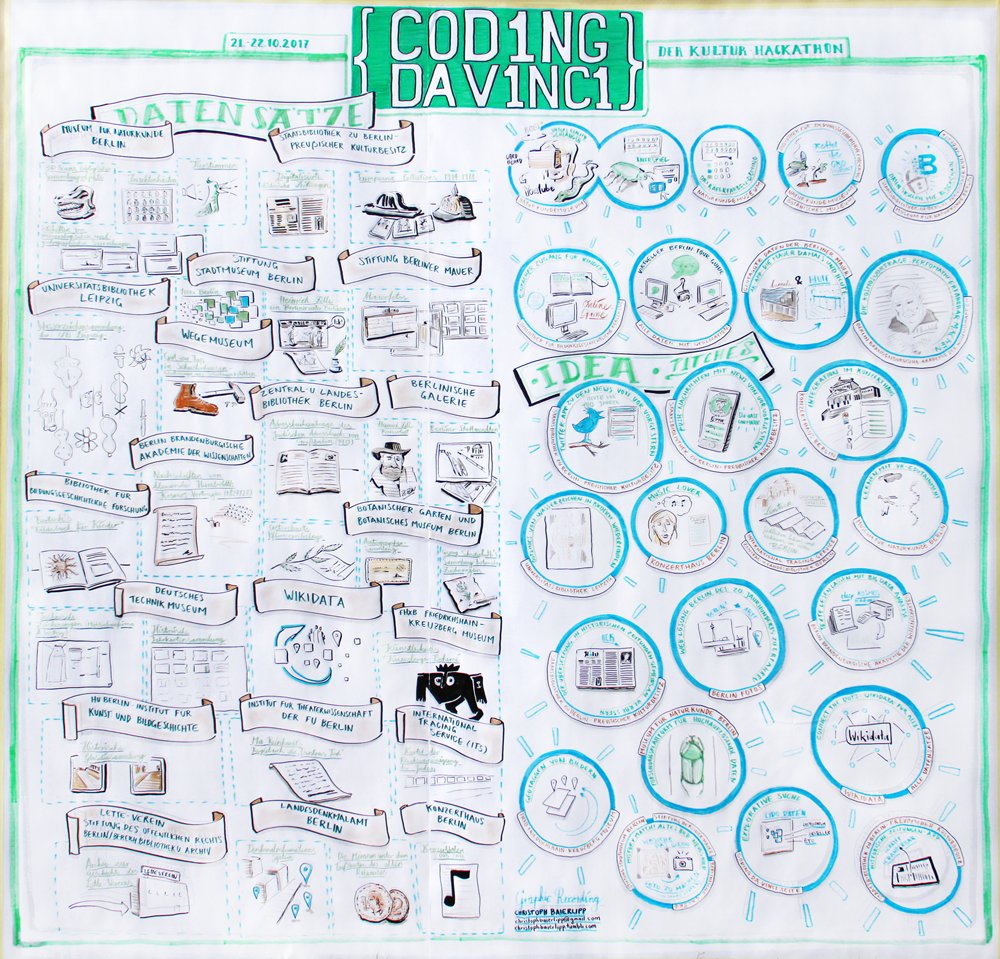
The Coding da Vinci jury awarded a total of six prizes in these categories:
-
The most technical: MauAR - augmented reality tour guide of the Berlin Wall
-
The most useful: Exploring the hidden Kosmos - text comparisons and readouts of Humboldt’s Kosmos lectures
-
The best design: Bertuchs Bilderspiel - interactive online game for children
-
The funniest hack: Haxorpoda - bug sorting by shapes and colors
-
Out of competition: Marbles of Remembrance - chatbot of Jewish life in Berlin during the Nazi period
-
Everybody’s darling: Skelex - explore digitized snake heads by means of virtual reality
We invite you to have a look at the projects, find some inspiration, get yourself an Europeana API key and start hacking/designing/playing!


